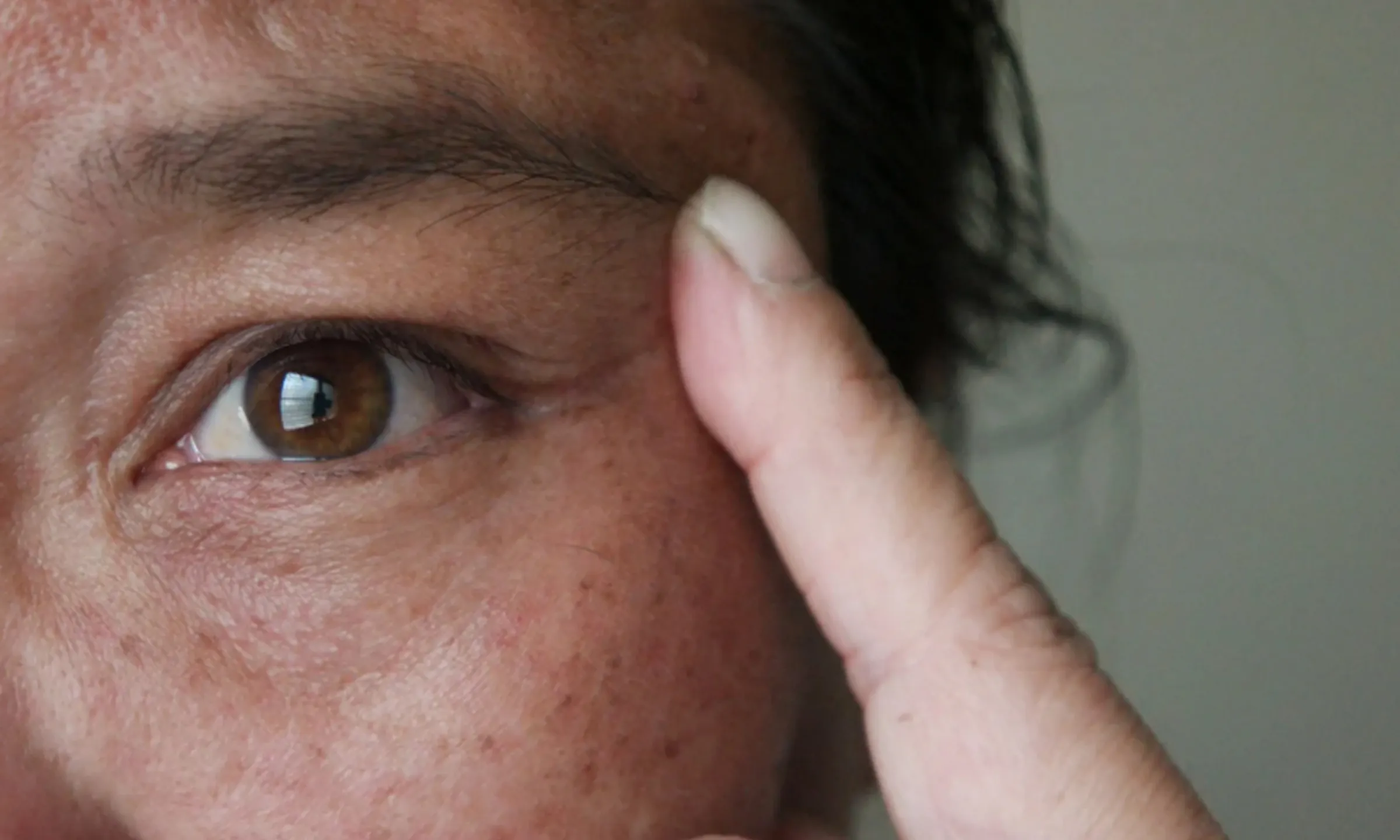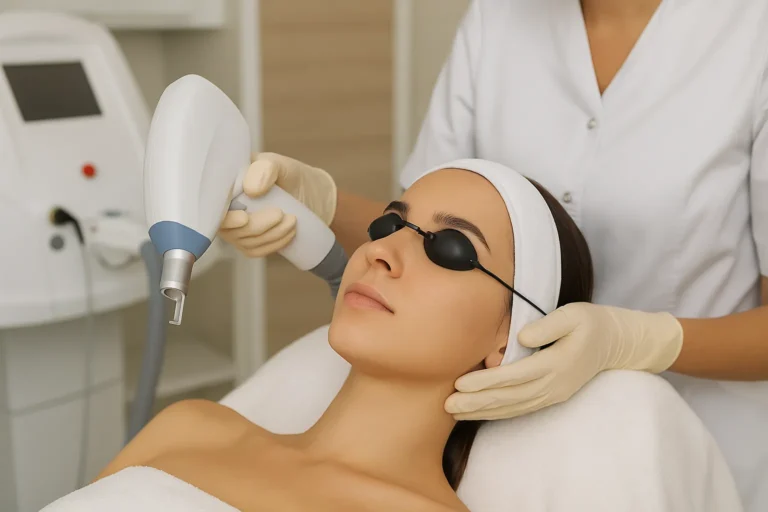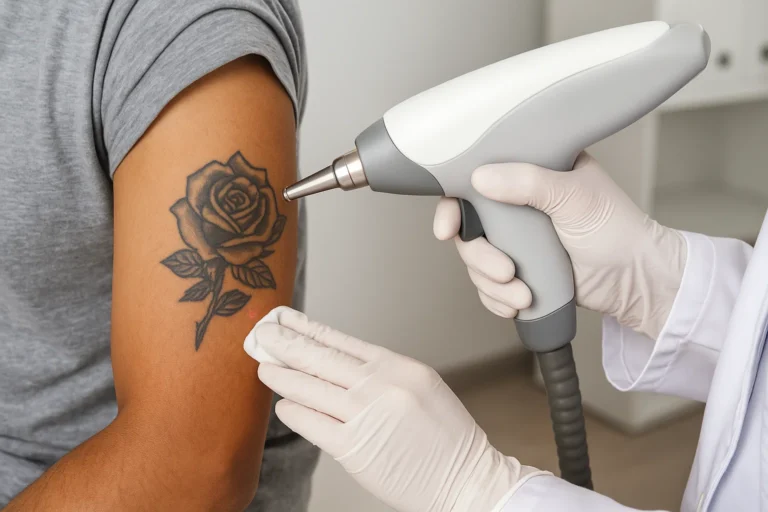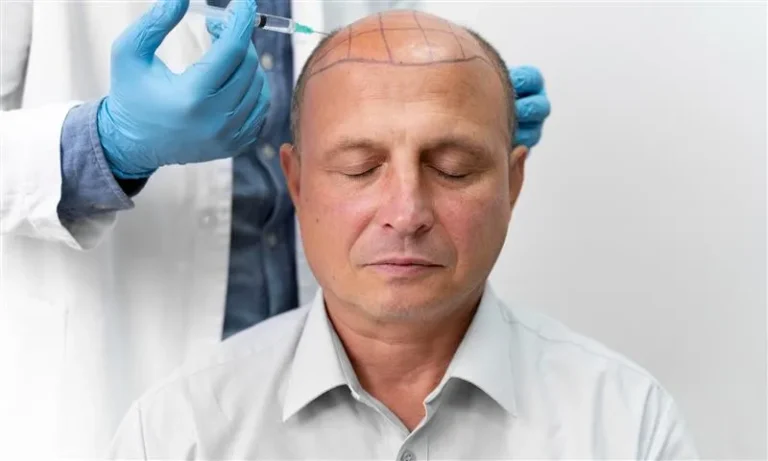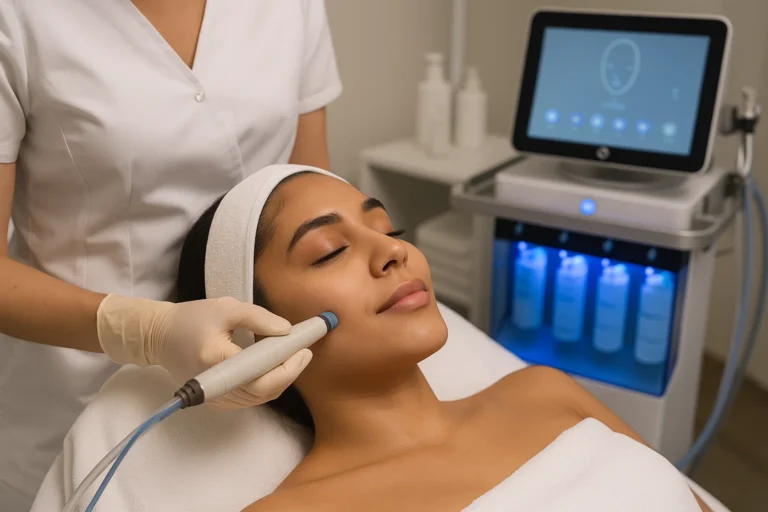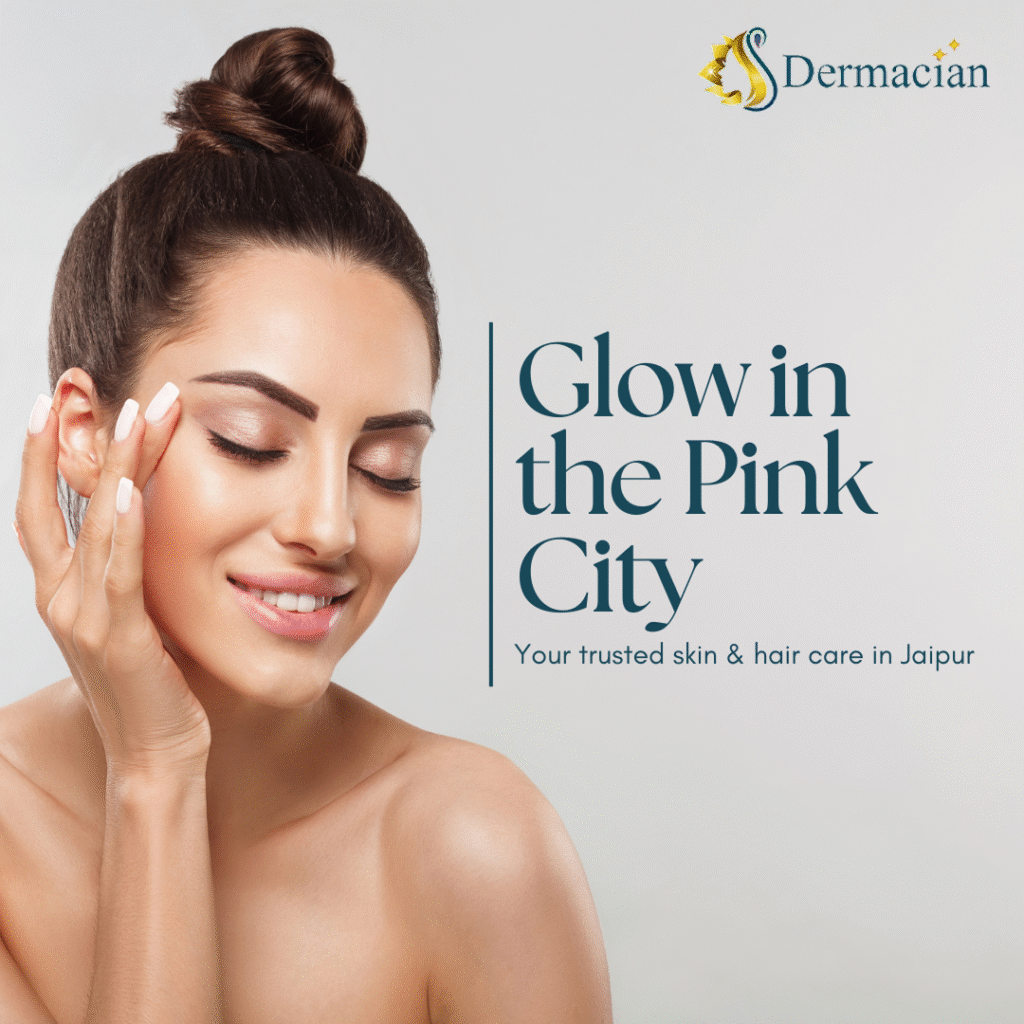Have you started noticing dark spots, uneven skin tone, or patches of discoloration on your face or body? You’re not alone. Skin pigmentation is one of the most common skin concerns in India, affecting people of all skin types and ages. While it’s usually harmless, it can impact your confidence and appearance—especially when it becomes persistent or worsens over time.
In this guide, we’ll walk you through what pigmentation really is, its underlying causes, and the most effective treatment options available today. Whether you’re dealing with sun spots, post-acne marks, or melasma, understanding your skin is the first step toward clearer, healthier results.
If you’re looking for expert care, Dermacian in Jaipur offers specialized pigmentation treatments backed by dermatological expertise and advanced technology.
What is Pigmentation?
Pigmentation refers to the coloring of your skin, primarily determined by a natural pigment called melanin. Produced by specialized skin cells known as melanocytes, melanin helps protect the skin from sun damage and gives it its natural color. However, when melanin production becomes unbalanced—either excessive or reduced—it leads to noticeable changes in skin tone and texture.
These changes are often visible as dark spots, patches, or uneven skin tone, and may appear gradually or suddenly depending on the underlying cause.
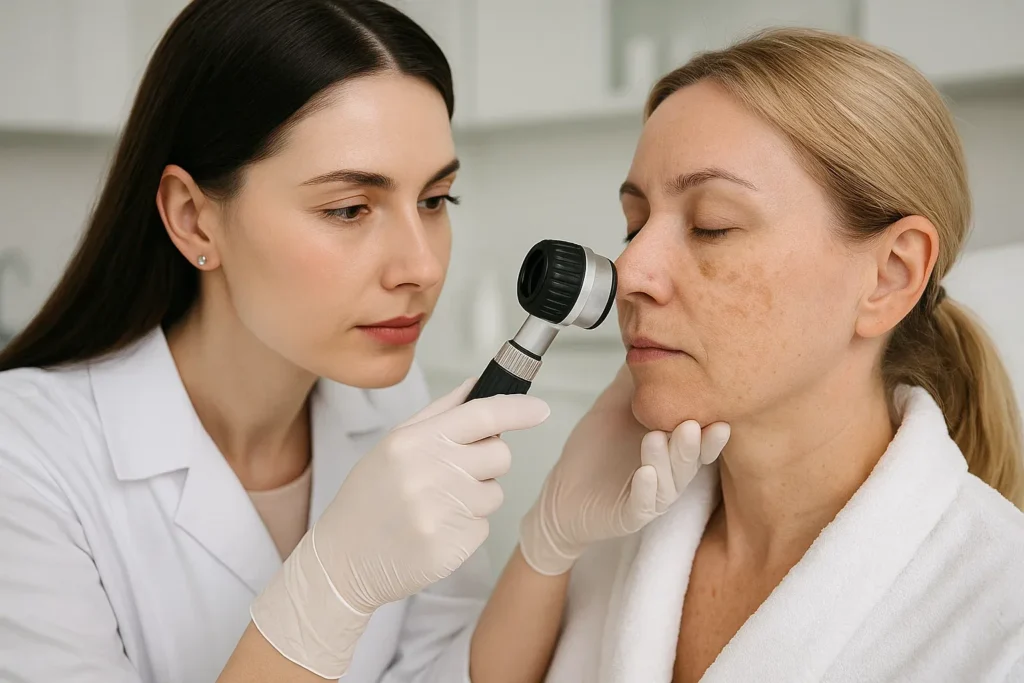
Common Types of Pigmentation
1. Hyperpigmentation
Occurs when the skin produces too much melanin, resulting in darkened areas. It’s the most common form and includes:
- Melasma – Often triggered by hormonal changes
- Sunspots – Caused by long-term sun exposure
- Post-inflammatory hyperpigmentation (PIH) – Dark marks left after acne, burns, or injuries
2. Hypopigmentation
This is the loss of pigment, where certain areas appear lighter than the rest of your skin. It can occur due to conditions like vitiligo or skin trauma.
3. Freckles & Age Spots
Small, flat spots that develop due to sun exposure or aging. While harmless, they may become more visible with time or sun damage.
Common Causes of Pigmentation
Understanding what triggers pigmentation is the first step toward effective treatment. Pigmentation issues typically result from an imbalance in melanin production, often caused by internal or external factors. Here are the most common causes:
1. Sun Exposure
Prolonged or unprotected exposure to ultraviolet (UV) rays stimulates excess melanin production, leading to sunspots, tanning, and long-term hyperpigmentation. Areas frequently exposed to the sun—like the face, arms, and neck—are more prone.
2. Hormonal Changes
Hormonal fluctuations, especially during pregnancy or while using birth control pills, can trigger a condition called melasma, which causes symmetrical dark patches on the cheeks, forehead, and upper lip. It’s more common in women with medium to dark skin tones.
3. Post-Inflammatory Pigmentation (PIH)
Any skin trauma—like acne breakouts, burns, cuts, or eczema—can result in dark marks during the healing process. PIH is one of the most common reasons patients seek pigmentation treatment.
4. Genetics
Some individuals are genetically predisposed to develop freckles, melasma, or other pigmentation disorders. Family history can play a significant role, especially in conditions like vitiligo.
5. Medications & Medical Conditions
Certain medications, such as antibiotics, anti-seizure drugs, or chemotherapy, can lead to pigmentation as a side effect. Medical issues like Addison’s disease or insulin resistance may also trigger skin discoloration.
6. Aging
As you age, the skin’s ability to regenerate slows down, and pigment-producing cells become uneven in distribution. This results in age spots or “liver spots,” commonly seen on the hands and face after 40.
7. Skin Injuries
Repeated waxing, friction, laser misuse, or chemical burns can damage the skin barrier, leading to long-term pigmentation in sensitive areas.
How to Identify Pigmentation on Your Skin
Not all dark spots or patches are the same. If you’re noticing changes in your skin tone, it’s important to identify whether it’s pigmentation and understand when to seek professional help.
Signs You May Have Pigmentation
You might be dealing with pigmentation if you notice:
- Dark patches that are flat, brown, or grayish in color
- Uneven skin tone that worsens with sun exposure
- Marks left behind by acne, injuries, or burns
- Freckles or sunspots that increase in number over time
- Symmetrical patches across the cheeks, forehead, or upper lip (possible melasma)
These signs can appear on the face, neck, arms, hands, or even your back—especially in areas frequently exposed to the sun.
When to See a Dermatologist
If the spots are:
- Growing in size or number
- Becoming darker despite sunscreen use
- Unresponsive to over-the-counter creams
- Causing emotional stress or confidence issues
…then it’s time to consult a dermatologist.
At Dermacian, we assess your skin type, medical history, and pigmentation level before recommending a customized treatment plan.
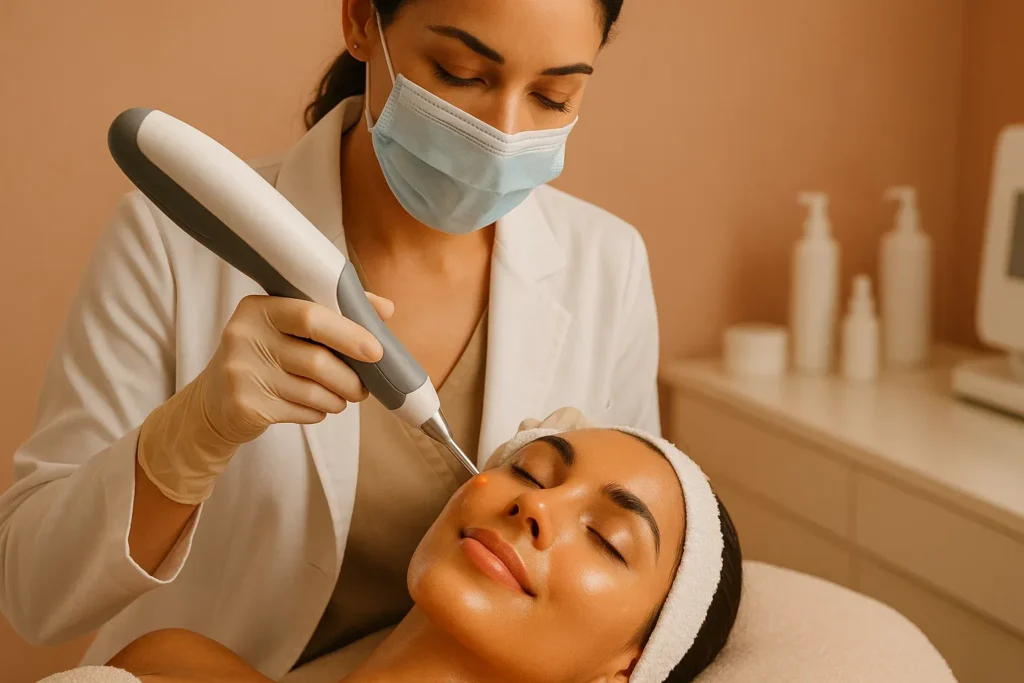
Pigmentation Treatment Options
The right pigmentation treatment depends on the type, severity, and cause of your skin concern. At Dermacian, our dermatologists begin with a detailed skin analysis to create a personalized treatment plan. Below are the most trusted and dermatologist-recommended solutions available today.
1. Topical Creams and Serums
These are often the first line of treatment, especially for mild to moderate pigmentation.
- Ingredients to look for:
- Hydroquinone – a powerful melanin suppressant (prescription-based)
- Kojic acid, Arbutin, Vitamin C, and Niacinamide – for gradual brightening
- Retinoids – boost skin renewal and fade dark spots
These are best used under medical supervision to prevent overuse or irritation.
2. Chemical Peels
Chemical peels help exfoliate the top layer of your skin, encouraging cell turnover and lightening pigmentation.
- Types of peels:
- Glycolic acid peel – for surface-level spots
- Salicylic acid peel – ideal for acne-prone pigmented skin
- TCA (Trichloroacetic acid) peel – for deeper pigmentation
Chemical peels at Dermacian are customized based on your skin tone and sensitivity.
3. Laser Treatments
For stubborn or widespread pigmentation, laser therapy offers fast and targeted results.
- Q-Switched Laser – Breaks down excess melanin without damaging surrounding skin
- Fractional Laser – Resurfaces deeper skin layers and improves tone and texture
Laser treatments require expert handling and post-care, both of which are carefully managed by Dermacian’s certified specialists.
4. Microdermabrasion
A gentle, mechanical exfoliation method that removes the outermost layer of dead skin. It’s ideal for dull skin with superficial pigmentation and works well in combination with peels or topical products.
5. Medical Prescriptions
In some cases, oral medications or compounded topical formulas may be prescribed to regulate hormonal imbalances or melanin production from within.
6. Lifestyle and Skincare Changes
Your daily skincare routine plays a vital role in both treatment and prevention.
- Always wear broad-spectrum sunscreen with SPF 30 or higher
- Avoid direct sunlight during peak hours
- Use mild, dermatologist-recommended cleansers and moisturizers
- Never pick or scrub pigmented areas
Our experts at Dermacian also guide you on safe skincare products tailored to your skin type.
Prevention Tips for Pigmentation
While some causes of pigmentation are out of your control, many cases can be prevented—or at least managed—through consistent skincare and smart daily habits. Whether you’re undergoing treatment or trying to avoid future flare-ups, these tips can help you maintain a more even and healthy skin tone.
1. Use Sunscreen Every Day
Apply a broad-spectrum SPF 30 or higher sunscreen daily, even on cloudy days or when indoors near windows. Reapply every 2–3 hours if you’re outdoors.
Tip: Choose a sunscreen that also contains ingredients like zinc oxide or titanium dioxide for better protection against both UVA and UVB rays.
2. Limit Sun Exposure
Avoid direct sun between 10 AM and 4 PM, when UV rays are strongest. Wear wide-brimmed hats, sunglasses, and protective clothing when outdoors.
3. Be Gentle With Your Skin
Avoid aggressive scrubbing, harsh exfoliants, or repeated use of bleach creams. Skin trauma can worsen or trigger pigmentation, especially post-acne or waxing.
4. Choose the Right Skincare Products
Use products free from alcohol, fragrance, and irritants. Your dermatologist can help you select cleansers, serums, and moisturizers suitable for pigmented or sensitive skin.
5. Treat Skin Issues Early
Conditions like acne, eczema, or inflammation should be treated promptly to prevent post-inflammatory pigmentation. Delayed care often leads to lingering dark marks.
6. Regular Dermatologist Check-Ups
If you’re prone to pigmentation, a dermatologist can help you monitor changes and adjust treatments as needed—especially during hormonal shifts or seasonal transitions.
Why Choose Dermacian for Pigmentation Treatment in Jaipur
When it comes to treating pigmentation, expert care makes all the difference. At Dermacian, we understand that every skin type is unique and that pigmentation issues require personalized, medically sound solutions—not guesswork or one-size-fits-all creams.
Here’s What Sets Us Apart:
1. Experienced Dermatologists
Our team includes board-certified skin specialists who are trained in diagnosing and treating all types of pigmentation, from melasma to post-acne marks.
2. Customized Treatment Plans
We don’t believe in quick fixes. Each patient receives a personalized skin analysis and treatment plan based on their skin tone, pigmentation depth, and medical history.
3. Advanced Technology
We use clinically proven technologies like Q-switched lasers, chemical peels, and carbon facials to ensure safe and effective results for all skin tones.
Learn more about our advanced pigmentation services: Explore Carbon Facial at Dermacian
4. Trusted by 1000+ Patients
With a growing base of satisfied clients in Jaipur and beyond, Dermacian is recognized for delivering visible, lasting skin improvements.
5. Comfortable, Central Location
Our clinic in Jaipur is equipped with modern facilities, a hygienic environment, and friendly support staff to ensure a smooth and comfortable experience.
6. Easy Consultation Booking
Ready to start your skin journey? Book your consultation today and take the first step toward clearer, more even-toned skin.
Conclusion
Pigmentation is more than just a cosmetic concern — it often signals deeper skin imbalances that deserve expert attention. From sun exposure to hormonal shifts, many factors can contribute to dark spots, uneven tone, and stubborn discoloration. But the good news is: most pigmentation issues are treatable with the right approach.
Whether you’re just beginning to notice changes in your skin or have tried several solutions without success, don’t settle for temporary fixes. Trust the expertise of trained dermatologists and personalized care that goes beyond surface-level treatments.
At Dermacian, we combine advanced technology with individualized treatment plans to help you restore clarity, confidence, and long-term skin health.
Take the first step toward clearer skin — Book your consultation now
FAQs
1: Can pigmentation go away on its own?
Some mild pigmentation—especially post-acne marks or temporary tanning—may fade over time with good skincare and sun protection. However, deeper pigmentation like melasma or sunspots usually requires professional treatment.
2: How long does pigmentation treatment take to show results?
Results depend on the type of pigmentation and the treatment chosen. Topical treatments may take 6–12 weeks, while chemical peels or laser treatments can show improvement in 3–5 sessions. At Dermacian, we tailor the plan to your specific skin needs and goals.
3: Is laser treatment safe for all skin types?
Yes, when performed by trained professionals using the right technology, laser treatments like Q-switched lasers are safe for Indian and darker skin tones. We assess your skin before recommending any procedure.
4: Can pigmentation return after treatment?
Pigmentation can recur due to sun exposure, hormonal changes, or inconsistent skincare. Following post-treatment care, using SPF daily, and regular dermatologist check-ups can help maintain results.
5: Do men get pigmentation too?
Absolutely. Pigmentation affects all genders. Men commonly experience sun-induced dark spots, post-shaving marks, and acne-related discoloration. Dermacian offers tailored solutions for both men and women.
6: Is there a permanent cure for pigmentation?
While many pigmentation conditions can be significantly reduced or managed, permanent “cure” depends on the cause. Regular maintenance, professional guidance, and early intervention offer the best long-term results.

